San Pascual Baylon Parish / National Shrine of Our Lady of Salambao / Obando Church
Bulacan is known for its rich history and cultural heritage, particularly when it comes to churches. The province is dotted with numerous beautiful churches that reflect the Spanish colonial influence, architectural diversity, and deep religious roots of the Filipino people. We first went to Bulacan for a pilgrimage in 2021 when I witnessed the historic Barasoain Church for the first time. Some towns, however, were still implementing restrictions due to Covid-19 that time, so exploring the province was quite a challenge.

Last year, we decided to revisit Bulacan for another pilgrimage. This time, however, we finally have an itinerary to follow, targeting some beautiful and historic churches in the province. The first church on our list is probably one of the famous churches in Bulacan. Dedicated under the patronage of San Pascual Baylon and Nuestra Señora Inmaculada Concepcion de Salambao, Obando Church is probably best known for its annual fertility rites – the “Sayaw sa Obando” (Obando Dance).
The town of Obando was established on 1753 and was named after Don Jose Francisco Solis de Obando, the Governor-General at that time. Prior to that, Obando was just part of Meycauayan and was formerly known as Catangalan (now Barangay Catanghalan). The famous ritual dance, however, is already an old practice by the early Filipino settlers in the area. The dance was referred to as the “Kasilonawan” dance which is celebrated through endless drinking, singing and dancing.

Meycauayan was formerly comprised of three villages; the Catanghalan (now Obando), Meycauayan, and Polo (now Valenzuela). Polo, however, was separated from Meycauayan in 1623 and the Franciscans built a new church dedicated to San Diego de Alcala. The Franciscans also established a chapel in Catangalan where they enshrined an image of St. Claire, making Santa Clara the first patron of Obando.
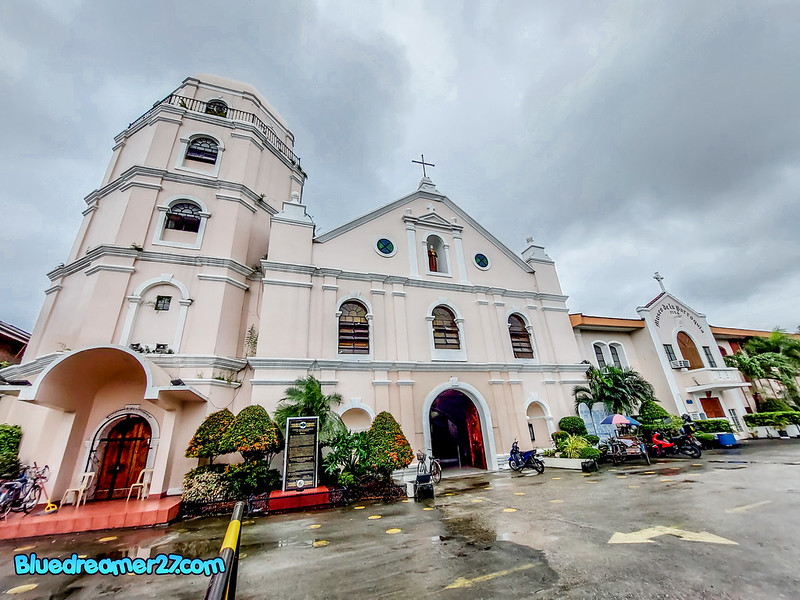
From rites being offered to deities, the Franciscans managed to attract the native Filipinos to go under the umbrella of Christianity by teaching them catechism and replacing their old beliefs with devotions to the Christian saints, particularly to Saint Claire. They made people believe that Saint Claire is the patron saint for dancing in order to bear a child to attract more Filipinos.
At the turn of the 18th century, many years after the establishment of the town of Obando, the image of St. Paschal of Baylon was added in the church altar. Unlike Saint Claire, Saint Paschal is indeed considered the patron saint of dancing for fertility and plenty, making him suitable as the town’s leading patron saint. Not to mention a great number of miracles attributed to the saint ever since it was enshrined to the parish. In addition to that, there are also accounts saying that Saint Paschal was newly canonized saint at that time and the Franciscans are very eager to promote the devotion to him.
After a few years, the 19th of June, 1763, another patron saint was added in the church of Obando. Two fishermen, Juan and Julian de la Cruz unexpectedly caught the image of the Immaculate Conception in their fishnet. In the unexpected sequences of the events, the third patron saint, the Immaculate Conception, known as the Our Lady of Salambao, is also appropriate to be a patron saint for the childless. The Our Lady of Salambao, since then, also became the patron saint of the fishermen of Obando.
Generally, Obando has three patron saints; Saint Claire, Saint Paschal, and Our lady of Salambao.

Architecture-wise, Obando Church comes with a simple façade. The façade is composed of windows and flat columns. The pediment comes with a niche that enshrines the image of Saint Paschal. It has two small round windows at the side.

The statue of Saint Paschal at the center niche of the façade
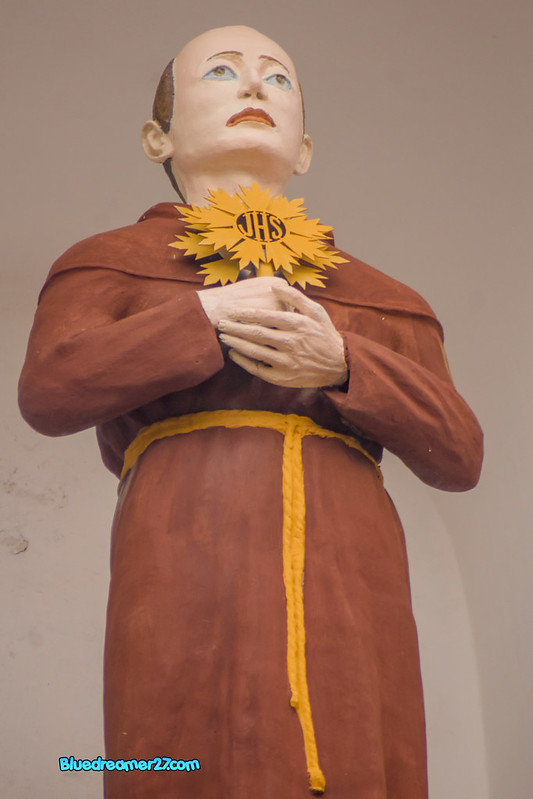
Upclose shot of the statue of San Pascual

The bellfry
The church is also attached to a 5-story high octagonal belfry.

Adjacent to the structure is the newly-opened “Museo de la Parroquia” that brings together the Obando church’s collections of historic photographs of the “Sayaw sa Obando” and vestments of Our Lady of Salambao.
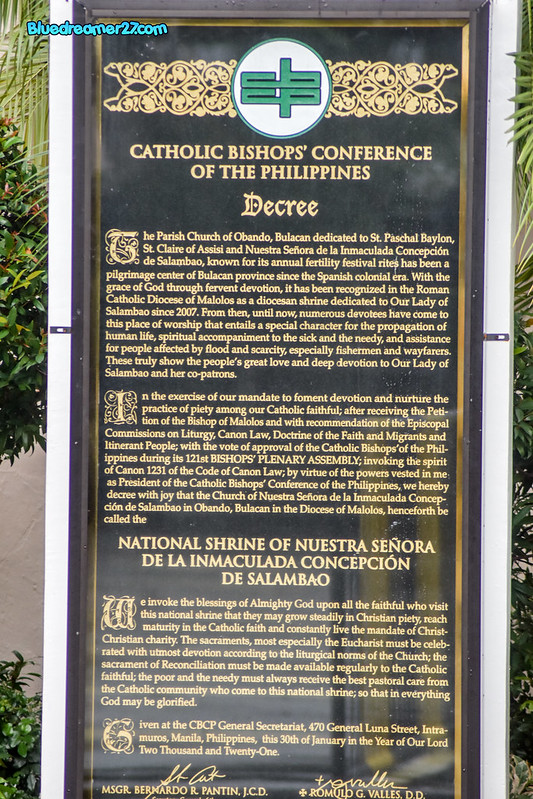
A marker indicating the church’s declaration as a National Shrine
In 2021, San Pascual Baylon Parish was elevated into a National Shrine Nuestra Señora Inmaculada Concepcion de Salambao. The solemn declaration took place in March of 2022.
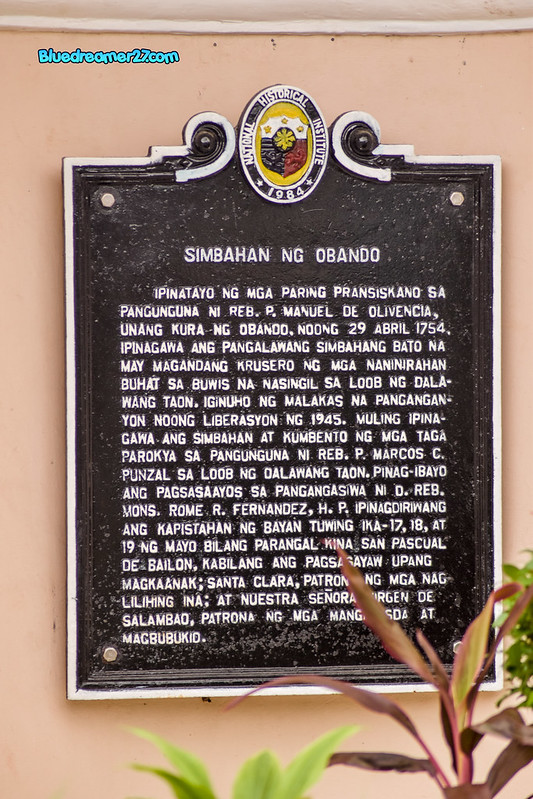
A historical marker in front of the Obando Church

The interior of the church is equally mesmerizing. It has laminated wooden ceiling and patterned-tile flooring. The walls, on the other hand are complemented with silver and gold accents.
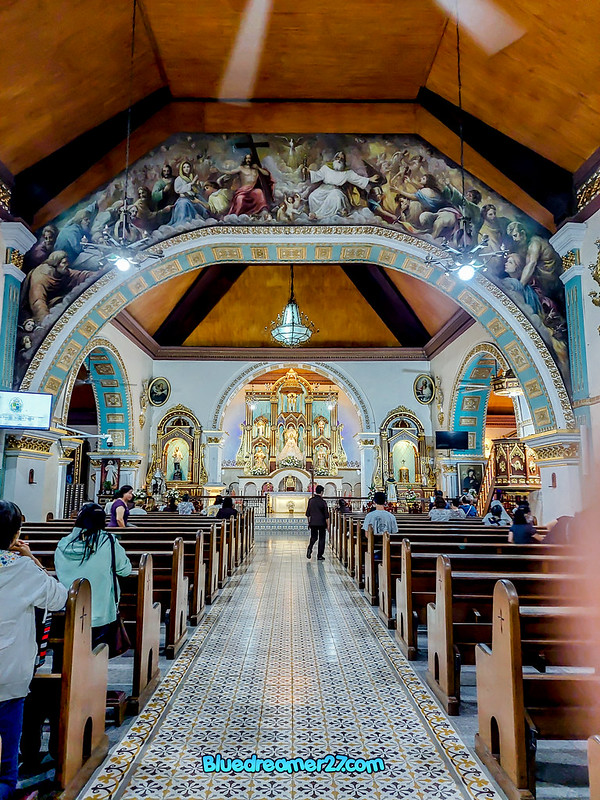
The sanctuary also features a huge arc with paintings depicting different biblical images

You can also spot an intricately decorated pulpit nearby
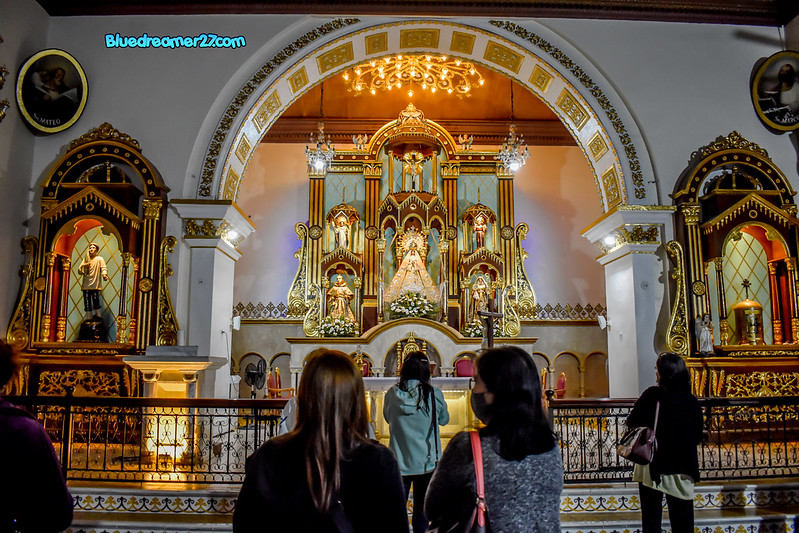
The altar is comprised of three retablos. The two side retablos enshrines the tabernacle of the Blessed Sacrament and the image of San Lorenzo Ruiz.

The main retablo enshrines the church’s three patron saints, a couple of Franciscan saints, and a Crucified Christ.

Santo Domingo de Guzman

San Francisco de Assisi

Santa Clara de Assisi

San Pascual Baylon

Our Lady of Salambao

Closer shot of Our Lady of Salambao

Another image of Santo Domingo de Guzman

Some gold decorations in the altar

Another image of Santa Clara

Carved main door of Obando Church

Unique chandeliers of Obando Church

Souvenirs from Obando Church
Over the centuries, the Obando Church has faced the challenges of time and natural disasters. Despite these adversities, the church has been meticulously restored and preserved, thanks to the dedication of the local community and heritage conservation efforts.
The Obando Church’s rich history, architectural splendor, and unique fertility rites make it a captivating destination for both pilgrims and tourists. Its enduring presence serves as a bridge between the past and the present, connecting generations and cultures through faith, tradition, and shared celebrations. As visitors step through its doors, they are greeted not only by the physical beauty of the church but also by the intangible sense of spirituality and cultural heritage that emanates from its walls.
This post is part of my Bulacan Pilgrimage 2022 series. Feel free to revisit my previous articles
- San Pascual Baylon Parish / National Shrine of Our Lady of Salambao / Obando Church
- Our Lady of Assumption Parish of Bulakan, Bulacan
- Minor Basilica and Parish of La Purisima Concepcion of Santa Maria, Bulacan
- Our Lady of Lourdes Grotto Shrine in San Jose Del Monte Bulacan
You might also want to visit my articles about other churches in Bulacan
- Saint Joseph the Worker Parish in San Jose Del Monte, Bulacan
- San Isidro Labrador Parish in San Jose Del Monte, Bulacan
- Nuestro Senor Jesucristo Parish/ Diocesan Shrine of Saint Andrew Kim Taegon – Bocaue, Bulacan
- Saint Andrew Kim Taegon Shrine Museum
- Santiago Apostol Parish in Plaridel Bulacan
- San Agustin Parish and Birhen sa Patio of Baliuag Bulacan
- Santo Nino de Bustos Parish in Bustos, Bulacan
Other places to visit in Bulacan
References: Obando.gov.ph / The Sacred Images, Patronages, and Rituals of Obando Church: A Historical Investigation / CBCP News /




I enjoyed reading your post about the Obando Church, one of the oldest and most revered churches in the Philippines. You have done a great job of explaining the history and significance of this church, as well as the devotion and rituals associated with it. I was amazed by your stories about the miracles and blessings that people have received from Our Lady of Salambao. I also appreciated your tips and reminders on how to visit this church respectfully and safely.